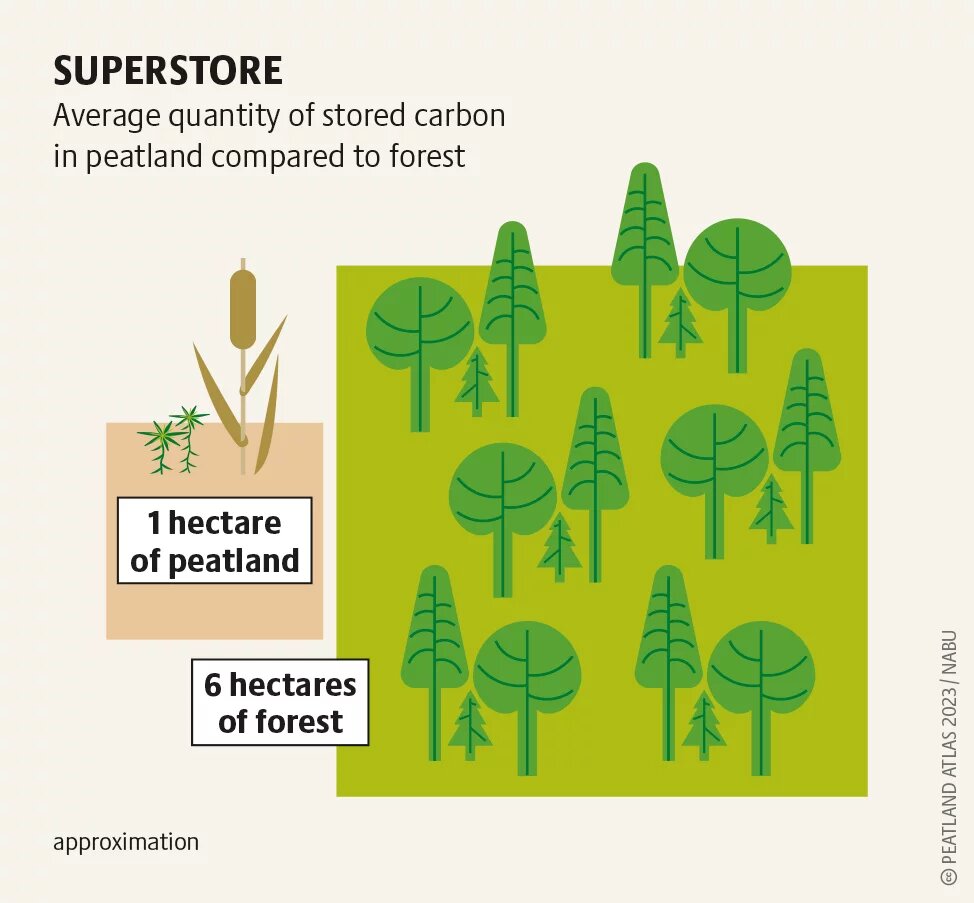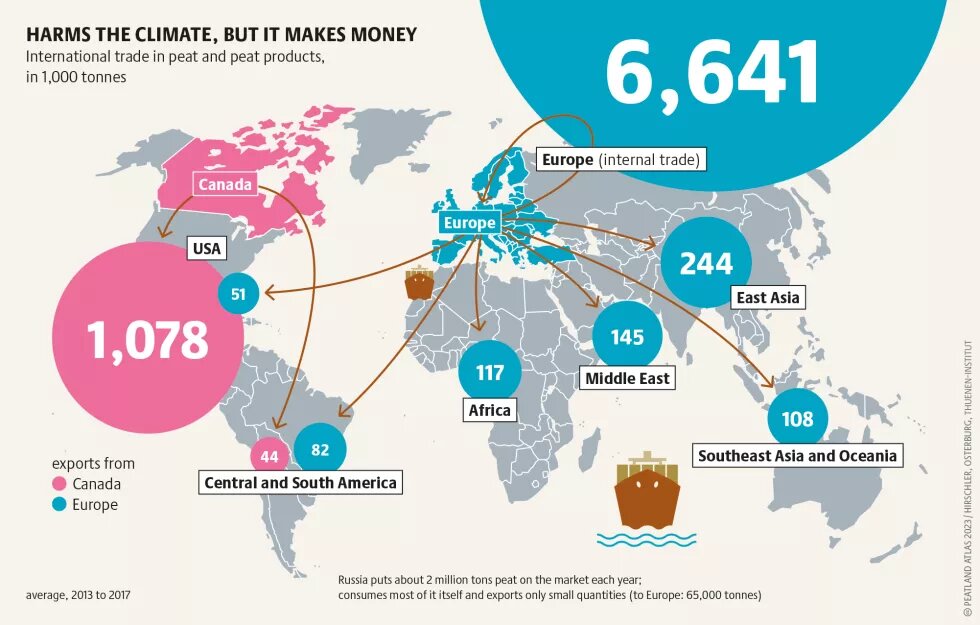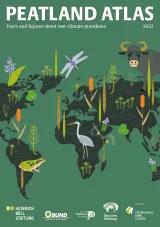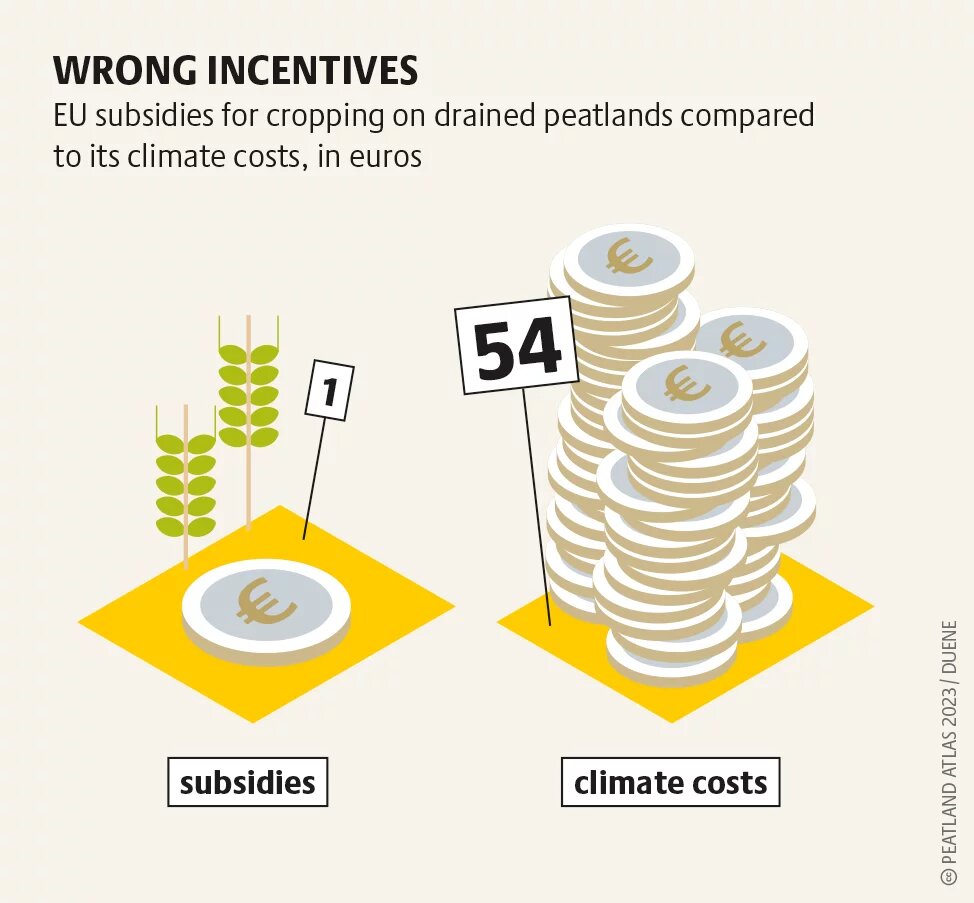
Peat consists of dead organic matter accumulated over thousands of years. Since centuries, peat soils have been exploited to obtain fuel or raw material for growing media. Peat extraction and use is harmful to the environment. Sustainable alternatives will only prevail if politicians act.

Unlike wood or coal, the temperature at which peat burns is reasonably constant and easy to regulate. Peat was already used as a fuel over 4,000 years ago in the Bronze Age. It is still used today as a source of electricity and heat, particularly in Finland, Ireland, Russia, Belarus and Rwanda. Since the middle of the 20th century, it has been used in horticulture as a raw material for growing media. Peat accumulated from peat mosses in particular has many advantages for horticultural use. Its high porosity enables this peat to retain air and water – and release it when required. It also has a stable structure, which is useful especially for long-lasting plant cultures. At the same time, peat contains very few nutrients, pollutants or pathogens.
Smaller amounts of peat are also used for other purposes. Peat can absorb liquids quickly, which is why it is used both in livestock bedding and in diapers. Because peat contains hormone-like substances and humic acids and is effective against bacteria, viruses and inflammation, it is considered to be a natural remedy and is used in balneological baths and packs. Dry peat can be used as insulation material, because it contains a lot of air. In agriculture, peat is applied to improve mineral soils, loosen them up and enrich them with humus. Peat is also used as a raw material in the production of activated charcoal, which is used as a filtering material in industry. Textiles can be made from peat fibre – the name given to the leaf sheaths of sheathed cottongrass, a common plant species of bogs. These fibres are sifted out of the peat when it is being processed for horticultural uses. Peat is also a famous flavouring agent: during the malting process in whisky production, barley is dried slowly over a smouldering peat fire, giving the whisky its famous smoky taste. In Iceland and Germany, people in the past often built houses from peat sods, due to the lack of wood.
Global peat deposits are estimated at up to 13.8 billion cubic metres. Worldwide, around 24 million tonnes are extracted each year – of this some 83 percent are extracted in Europe alone. Until 2017, more than half of the peat extracted was used as fuel – though this amount decreased considerably in recent years. About 10.3 million tonnes of peat, or 41 million cubic metres, are extracted each year to produce horticultural substrates and potting soil. While peat fuel is generally burned in the country where it is extracted, peat for horticultural use is traded internationally, both as a raw material and mixed into substrates. In Europe, peat extraction for horticulture is concentrated in the Baltic States, Germany, Fennoscandian Peninsula and Ireland. Outside of Europe, peat is also massively extracted in Canada, mostly for export to the USA. Peat extraction for horticulture also exist on a smaller scale in the USA, Russia, Chile and Argentina. The biggest producers and end-users of peat-based substrates are Germany, the Netherlands and the United States.
In the coming decades, the industry expects a strong increase in demand for growing media worldwide, especially in Asia. To meet the societal demands of today, fossil peat should not be used for this purpose, but efforts to produce renewable materials regionally should be significantly increased.
Peatlands store some 600 billion tonnes of carbon, or about one-third of the world’s total land-based carbon stores. Peat extraction and use in the European Union (EU) are responsible for greenhouse gas emissions in the order of 21.4 million tonnes of carbon dioxide (CO₂)-equivalent a year. That amounts to about one tenth of the total EU emissions from peatlands. However, the extraction and use of peat, by releasing carbon particularly quickly, result in the highest emissions per hectare of all peatland uses. The Intergovernmental Panel on Climate Change classifies peat as a fossil resource and warns that its use is no longer appropriate in the face of the climate crisis.
That is why several countries are preparing to move away from peat use. One example is Ireland, which aims to end the extraction and use of peat as a fuel by 2030. Finland, currently the European Union’s biggest consumer of peat-based energy, aims to cut its consumption by 50 percent by the end of the decade. However, changes in the geopolitical situation since Russia’s invasion of Ukraine have thrown such plans into doubt: Finnish companies have cited energy supply uncertainties in announcing plans to resume peat extraction. In several countries, the extraction and use of horticultural peat is being addressed as part of national climate and peatland policies. Germany, for example, plans to phase out the use of peat in hobby gardening by 2026, and to largely replace it in commercial horticulture by 2030. Doing so will require increased investments in research and production of peat substitutes. These could come from renewable resources such as wood fibre, bark, compost or coconut fibre, or from biomass produced in paludiculture. Paludiculture is the sustainable production for example of peat moss or bulrush on rewetted peatlands. Demand for such materials is already rising in Europe.


